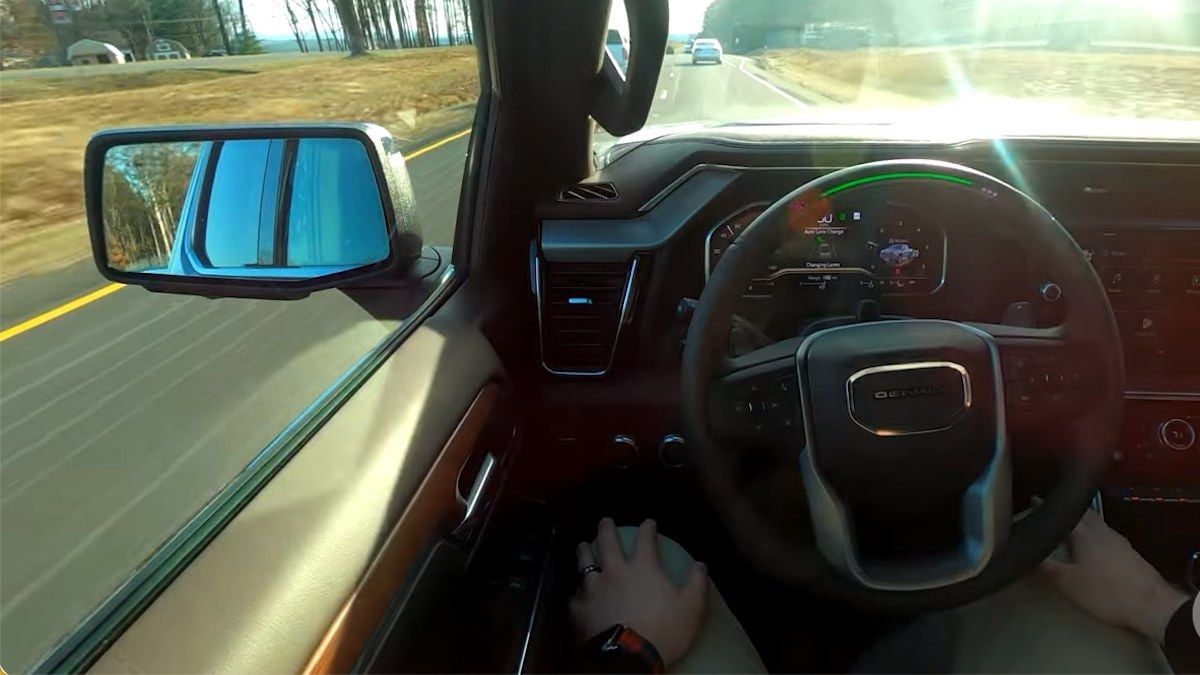The Insurance Institute for Highway Safety (IIHS) is introducing a new rating program to encourage automakers to incorporate more robust safeguards into their partial driving automation systems.
It's not good news for eleven automakers who failed the new testing program. Out of the first 14 car systems tested, only one earns an "Acceptable" rating. Two are rated "Marginal," and 11 are rated "Poor."
What Are Partial Driving Automation Systems?
A recent report from Forbes says partial automation technology uses cameras, radar, or other sensors to "see" the road and other vehicles, combining adaptive cruise control (ACC), lane centering, and various other driver assistance features.
Researchers found that "Shortcomings vary from system to system. For example, many vehicles don't adequately monitor whether the driver is looking at the road and is prepared to take control. Another weak area is systems that lack attention reminders that come quickly enough when problems arise or are not strong enough to gain the attention of a driver whose mind is drifting," says Forbes.
Related Story: Subaru Chief Says No to Driverless Cars; Says Yes to Accident-Free
7 Cars Get "Poor" Scores
IIHS says, "We evaluated partial automation systems from BMW, Ford, General Motors, Genesis, Lexus, Mercedes-Benz, Nissan, Tesla and Volvo," IIHS President David Harkey said. "Most of them don't include adequate measures to prevent misuse and keep drivers from losing focus on what's happening on the road."
Eleven Cars Failed
- Ford Mustang Mach-E
- Genesis G90
- Lexus LS (some trim levels earn a "Poor" rating)
- Mercedes-Benz C-Class sedan
- Nissan Ariya (some trim levels earn a "Poor" rating)
- Tesla Model 3
- Volvo S90
Which Model Passed?
- Lexus LS
Which Models Are Marginal?
- GMC Sierra
- Nissan Ariya
"Some drivers may feel that partial automation makes long drives easier, but there is little evidence it makes driving safer," Harkey said. "As many high-profile crashes have illustrated, it can introduce new risks when systems lack the appropriate safeguards."
Watch Automation Safeguards Fall Short - IIHS News
The IIHS Ratings
The IIHS says the ratings aim to encourage safeguards that can help reduce intentional misuse and prolonged attention lapses and to discourage specific design characteristics that increase risk in other ways—such as systems that can be operated when automatic emergency braking (AEB) is turned off, or seat belts are unbuckled.
The test scores are awarded based on a battery of tests conducted over multiple trials, and some performance areas are weighted more heavily than others.
The IIHS Expects Rapid Improvements
"These results are worrying, considering how quickly vehicles with these partial automation systems are hitting our roadways," Harkey said. "But there's a silver lining if you look at the performance of the group as a whole. No single system did well across the board, but in each category at least one system performed well. That means the fixes are readily available and, in some cases, may be accomplished with nothing more than a simple software update."
Subaru's Self-Driving Tech
I recently wrote about Subaru's next-generation model's safety technology. Subaru is now developing a new artificial intelligence (AI) for its EyeSight safety technology. At a press briefing in 2022, the Japanese automaker made a surprise statement when Subaru announced it had just sold its five millionth vehicle with EyeSight safety technology.
It concerns the driver assist system and what's coming to the 2025 Subaru Forester, Outback, Crosstrek, Ascent, and other next-generation models.
Related Content: Subaru Says Its New AI Tech Will Reduce Accidents, Not Be Self-Driving Like Tesla
Director Eiji Shibata will lead the Subaru team in creating the next-generation 2025 Forester and other models with AI technology.
"Subaru's approach is reducing traffic accident fatalities to zero as soon as possible rather than focusing on autonomous driving," Shibata said. And unlike many competitors, Shibata said Subaru is in no rush to adopt Lidar sensors for its safety systems.
Better Recognition In Hard-To-See Situations
Subaru's technology introduced in 2025 model vehicles will use artificial intelligence in the new EyeSight stereo cameras to improve computer recognition in hard-to-see situations, such as when road lane markers are covered in snow.
I cover safety issues here at Torque News. Check back often for my latest safety reports and consumer issues with today's new cars.
I am Denis Flierl, a top Torque News reporter since 2012. I’ve invested over 30 years in the automotive industry in a consulting role, working with every major car brand. I am an experienced Rocky Mountain Automotive Press member. You'll find my expert Subaru analysis here. Follow me on my The Dirty Subaru website, Dirty Subaru blog, X SubaruReport, All Subaru, WRXSTI, @DenisFlierl, Facebook, and Instagram.
Photo credit: IIHS





